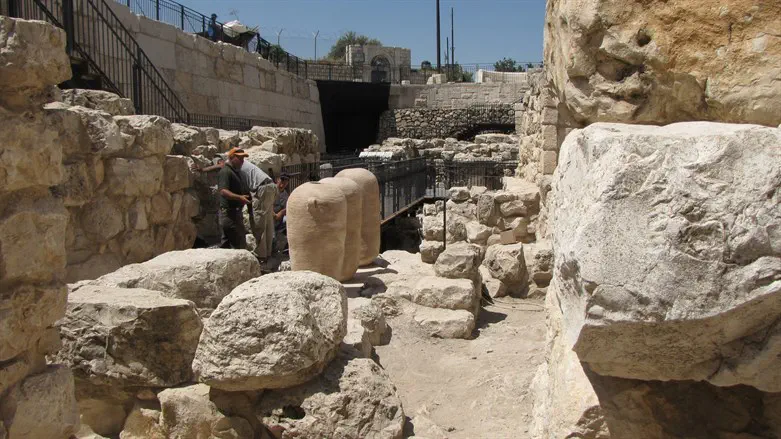
Dozens of archeological sites in Jerusalem, including burial caves of kohanim (ritual priests) from the era of the Second Temple, are in a state of shocking neglect, according to a new report in Israel Hayom, to be published in full this Friday. The sites concerned have frequently been vandalized, often by Arabs for nationalistic reasons, and many also serve as meeting places for criminals and drug users.
Now, however, the sites have been mapped out by Yosef Speizer, a doctoral student whose focus is on the Land of Israel and its archeology at Bar Ilan University. Speizer is also a member of the Jerusalem City Council, representing the Hitorerut party.
According to Jerusalem Mayor Moshe Lion, who has seen Speizer’s research, the issue has been neglected for decades. Now, he says, he will be approaching the Antiquities Authority in the hope that a budget can be allocated, which, he feels, is justified for nationalistic reasons.
To take one example: burial caves dating back to the Second Temple period in the Ben Hinnom Valley (Gei Ben Hinnom) just outside the Old City walls. Several of the caves are used for shelter by goats and camels; others are used by human trespassers for various purposes. Other caves have had the entrances smashed in by antiquities thieves who sell their findings on the black market for such goods.
In some locations, human bones can actually be found just lying around, both within burial caves and in the immediate vicinity – due to the activities of antiquities thieves, who flung them out while digging for treasures. In one cave, pottery fragments were found from broken flasks that once held oils or perfumes, used to dispel noxious odors.
Some of the damaged caves are decorated with unusual engravings and carvings. The remains of a Byzantine monastery that was discovered some years ago on the outskirts of the city on the way to Maale Adumim are in a similarly decrepit state. Not much of the mosaic floor remains; the cisterns and wells at the site have become dumping grounds.
“These sites are tangible educational resources for understanding history,” says Speizer. “They provide the actual evidence of our roots here. Preserving them is not just a matter of digging up the past but also of transmitting it to the coming generations.”
What he suggests is that the Jerusalem Municipality, in collaboration with the Antiquities Authority, should erect signposts for the benefit of the city’s residents, raising awareness of the sites; he would also like to see municipal employees cleaning up the sites and supervising them to ensure that the current state of neglect becomes a thing of the past.
